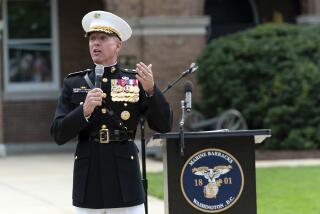Obama’s right on target in Afghanistan
President Obama and his aides continue to impress with their handling of Afghanistan. Not only have they approved a major troop increase and a de facto commitment to nation-building, but now they have shifted personnel to make the most effective use of the added resources and turn around a failing war effort.
The big news is that Army Gen. David D. McKiernan is out after just 11 months as the top commander. He will be replaced by Lt. Gen. Stanley McChrystal. Just as important, if less heralded, is the decision to appoint Lt. Gen. David Rodriguez, who had previously served in Afghanistan as commander of the 82nd Airborne Division, as the second-ranking commander. His role will be vital: to help the overstretched NATO staff pull together its disjointed war effort.
When I visited Afghanistan recently, I spent a couple of hours with McKiernan. He struck me as competent but too conventional and too colorless, not the rare kind of dynamic leader who could turn around a campaign in trouble. He was no George Patton, Matthew Ridgway, Creighton Abrams -- or David Petraeus.
In Iraq, I observed how hard Petraeus worked to impose his will not just on the enemy but on his own command. Outsiders may suppose that when a top general gives orders, his subordinates salute and execute. The reality is that, just as middle managers can frustrate the grand designs of a chief executive, so too lower-level officers and NCOs can act at odds with the grand strategy developed at the top.
To prevent that from happening, Petraeus took a variety of steps. He conducted frequent (and dangerous) “battlefield circulations,” where he would spend time talking with units in the field. He wrote open letters to the entire command laying out his vision. And he demanded that briefers at his daily updates present slides not just on traditional combat metrics like enemy attacks but also on areas such as electricity generation and economic activity. He asked for that information to ensure that his subordinates made those “lines of operation” a priority.
McKiernan, an armored officer, was not able to articulate and impose such a counterinsurgency strategy on his command. McChrystal, a Special Forces officer, is more likely to succeed. He spent an unusually long time (2003-2008) heading the Joint Special Operations Command, which is responsible for “black” counter-terrorism operations using elite units such as Delta Force. His longevity in that difficult job at a critical time after 9/11 was a testament to his effectiveness. He did a particularly impressive job at his forward headquarters in Iraq of integrating intelligence with operations to take down high-value targets such as Abu Musab Zarqawi.
I would not go as far as to claim, as Bob Woodward did in “The War Within,” that it was the special operators rather than the “surge” that turned around Iraq. Victory in a counter-insurgency depends more on securing the populace than on targeting enemy leaders. I am told that McChrystal realizes that, even if Woodward does not.
McChrystal also apparently grasps what McKiernan did not: Running the Afghanistan war cannot be a one-man show. There is a need to replicate the Iraq model with a four-star general focusing on strategic issues while a three-star deputy overseas daily operations. That role was filled in Iraq by Army Lt. Gen. Raymond Odierno, but McKiernan resisted such a setup in Afghanistan. Now McChrystal is expected to make Rodriguez the Odierno of Afghanistan.
Lest we forget that counterinsurgency is as much a political as a military undertaking, on the very day of McChrystal’s appointment, a new U.S. ambassador arrived in Kabul. Karl Eikenberry, himself a retired general and former commander in Afghanistan, will have to coordinate the civilian side of the war effort, as Ambassador Ryan Crocker did so ably in Iraq.
In some ways, the task faced by the new leadership team of McChrystal-Rodriguez-Eikenberry is easier than the one that confronted Petraeus-Odierno-Crocker in 2007. Afghanistan has gotten more violent, but civilian casualties there last year were still 16 times lower than in Iraq in 2006. The Afghan insurgents have a long way to go before they can match the threat once posed by Al Qaeda in Iraq, the Mahdist army and other Iraqi terrorist groups.
But, in other ways, Afghanistan is even tougher. Its insurgency does not have an obvious center of gravity, like Baghdad in Iraq. The enemy is spread out across a vast landscape and enjoys support zones in Pakistan, where American ground forces can’t go. An added complication is that the war effort is less U.S.-centric than in Iraq. Not only are there more foreign military contingents (41 in all) but also more aid organizations. Having allies can be a good thing, but it can also create lots of coordination headaches for senior leaders.
If anyone is up to handling these difficult tasks, it is the A-team that the Obama administration has assembled. Knowing they are on the job -- and that they will be supported by heavy hitters such as Richard Holbrooke at the State Department, Lt. Gen. Doug Lute at the National Security Council, Petraeus at Central Command and Adm. James Stavridis at NATO -- I have more confidence in the outcome in Afghanistan than I did just a few days ago.


